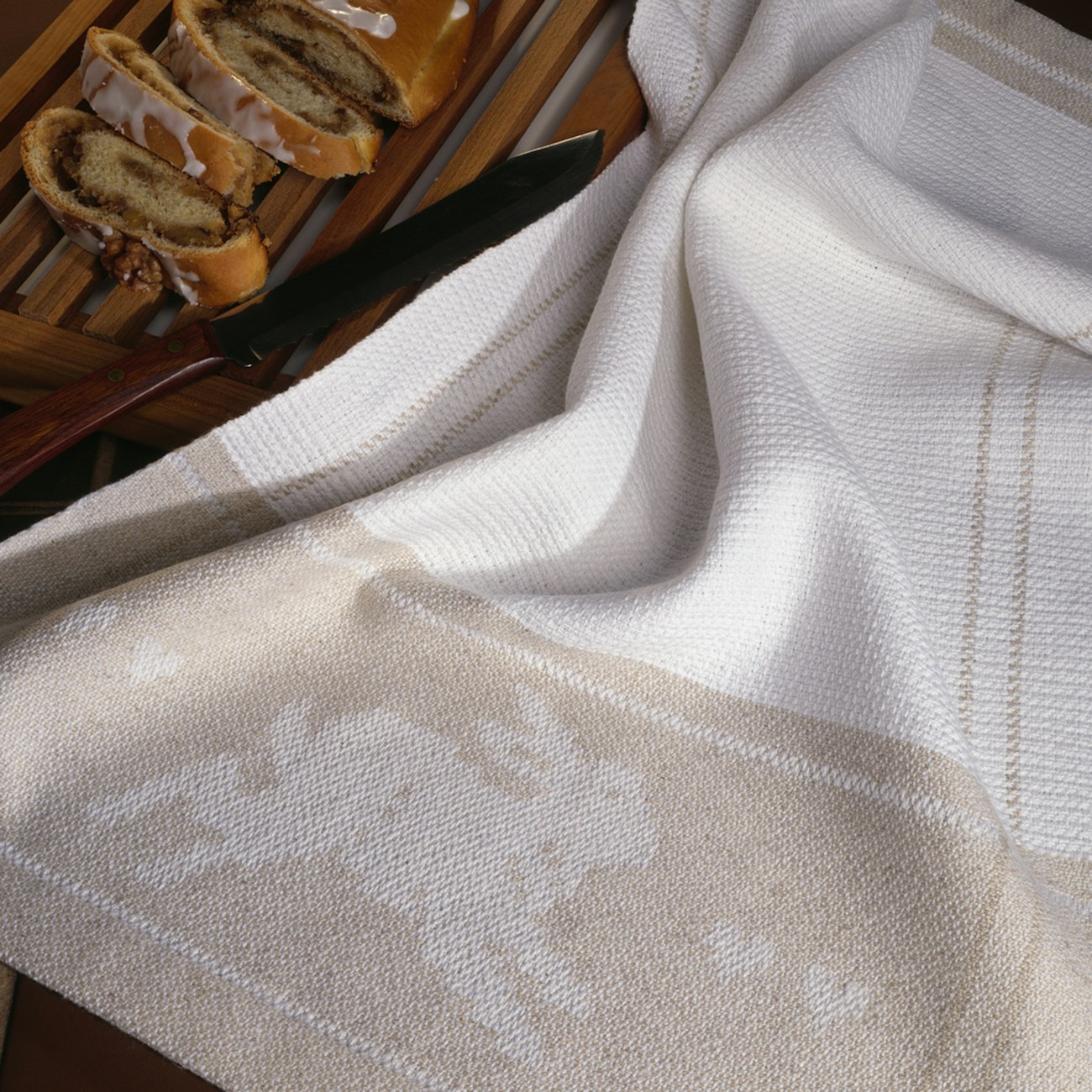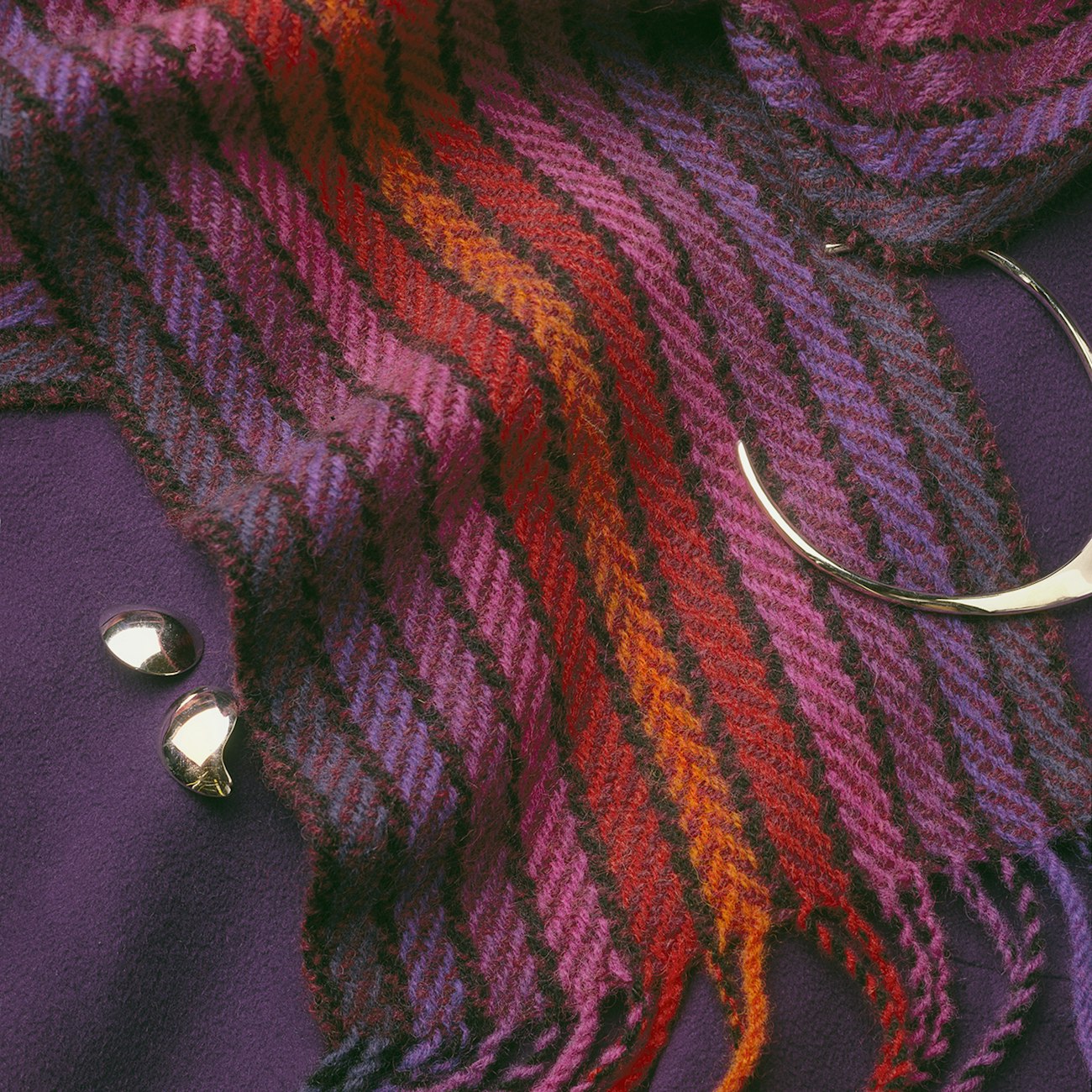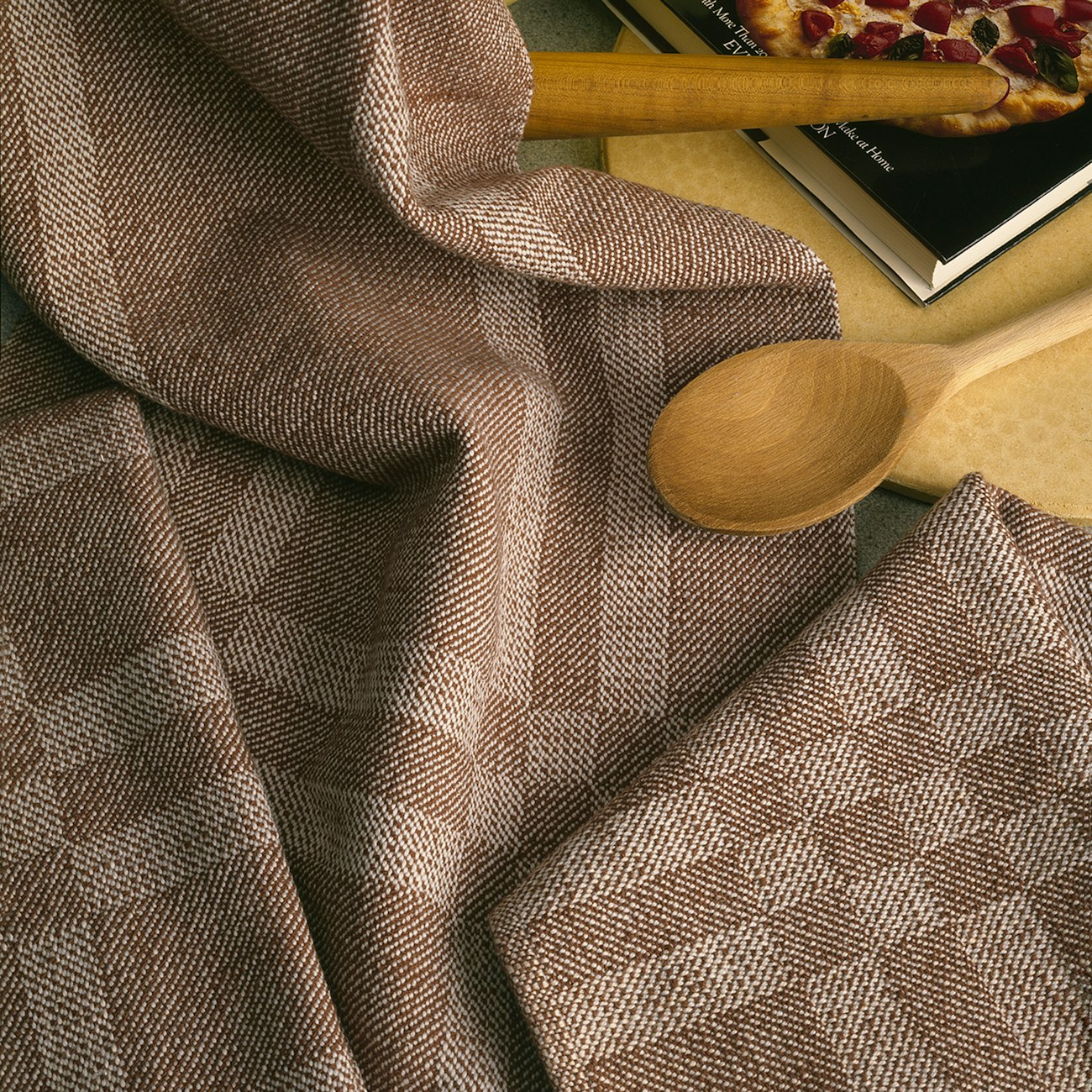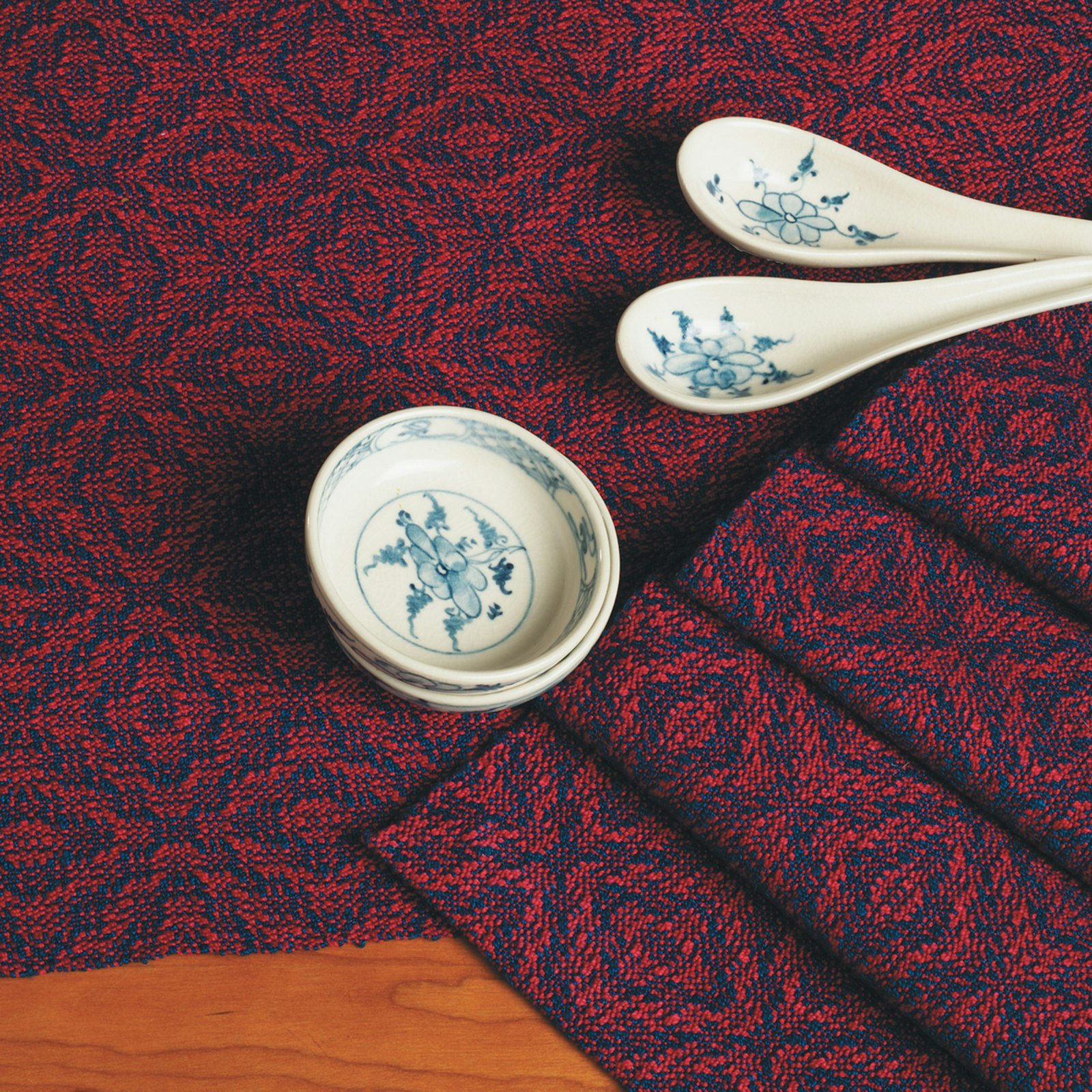The first item I ever wove was a twill “sampler.” It was an assignment by my first teacher. She gave us the warp (mine was orange carpet warp) and the weft (mine was army green Aunt Lydia’s rug yarn). I still have the sampler, and it is somewhere safe, where I can always find it if I need to. However, I can’t seem to remember where that is. If I could find it, I’d show a photo of it here and ask you: Should this person become a weaver? The reason I want to keep track of where it is is to make sure I destroy it before it ever has the chance of becoming part of some retrospective show of my “work.”
 A solid knowledge of twill weaving allows you to create mock damask and exciting designs like on these handwoven towels by Alison Irwin.
A solid knowledge of twill weaving allows you to create mock damask and exciting designs like on these handwoven towels by Alison Irwin.
In the first place, I didn’t know twill was a “balanced” weave. And since neither orange nor green were colors I liked at the time (blue and white were the only good colors from my point of view as a lover of antique coverlets), I tried to obliterate the orange with the green. So my “rosepath” turned out to be a weft-faced mass of army green. We were given several treadling variations of straight, zigzag, point, and rosepath twills to follow, but with my firm beat, they all looked pretty much the same. My conclusion was: I don’t like twill weaving (or orange, or green).
 The endless color variations of twill weaving make it one of the most exciting weave structures. Learn how to weave twill with this project,the "Glowing Embers Scarf" by Leslie Voiers
The endless color variations of twill weaving make it one of the most exciting weave structures. Learn how to weave twill with this project,the "Glowing Embers Scarf" by Leslie Voiers
At the time, in the early 1980s, the only basic resource for weavers that included very much information about twill weaving was Marguerite Porter Davison’s A Handweaver’s Pattern Book. Since the photos of the woven samples are all black and white, they are not necessarily inspiring unless you look closely at the patterns. It took several years of steadfastly not liking twill before I noticed that, for example, you could thread her Herringbone Mixture and get thirteen different designs on the same warp (the point my original teacher was probably trying to make). Multiple types of twills are scattered throughout Davison’s book with their many treadling variations, but even so, two major elements are missing: color and fiber. Not only are twill weaving patterns infinite in number, but their appearance is infinitely changeable through the use of color, and depending on yarns and setts, the fabric hand can be literally anything: soft and supply, firm and flat, thick and plush, whatever you need for absolutely any fabric use.
 Create handwoven towels with an attractive yet sturdy hand using twill blocks such as in the "Twill-Block Towels on Four Shafts" by Gloria Martin
Create handwoven towels with an attractive yet sturdy hand using twill blocks such as in the "Twill-Block Towels on Four Shafts" by Gloria Martin
Current All Access subscribers can access the Twills on Four Shafts eBook instantly in the Handwoven Library, or you can find this eBook in our shop.
The 1980s gave weavers publications with color, and twills took off. The Best of Handwoven eBook, Twills on Four Shafts, gives ten truly beautiful twill weaving projects that cover the gamut of twill types: herringbone, rosepath, dornick, straight, undulating, and more. Included is even the use of an advancing twill on four shafts. If I were to show you the placemats and runner designed by Barbara Elkins that are shown on the cover of this eBook and are in this post's top photo, you would swear they took more than four shafts to weave. Since this technique eBook includes steps for designing and drafting twills, you can use her article to create advancing twills of your own as well as adapting all the other twill types for original designs (including weaving damask-like patterns with a simple pick-up technique).
If I had had this eBook back in the early 1980s, I would have loved twills from the get-go, and my first weaving would have looked a lot better.

Originally published June 6, 2016; updated April 21, 2023.

